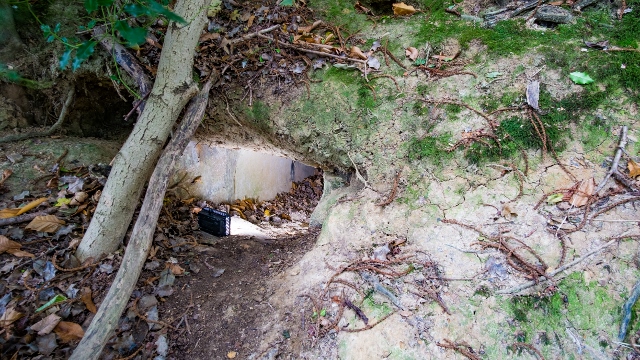Staplefield is a village in the Mid Sussex 4 miles north-west of Haywards Heath on the B2114 road.
| Name | Occupation | Posted from | Until |
|---|---|---|---|
| Sergeant Frank Masefield Baker | Farmer |
15 Oct 1942 | 03 Dec 1944 |
| Private Frank Ridgway Baker | Farm manager |
04 Jun 1940 | 03 Dec 1944 |
| Private Eric Charles Cattermole | Chartered surveyor |
02 Mar 1943 | 03 Dec 1944 |
| Private Gerald Ernest Cummins | Poultry Farmer |
15 Oct 1942 | 03 Dec 1944 |
| Private John Henry Curtis | Gardener |
26 Apr 1942 | Unknown |
| Private David Douglas Davie | Dairy farmer |
30 Dec 1942 | 03 Dec 1944 |
| Private Cecil Richard Mills | Gamekeeper & farm foreman |
20 Jun 1940 | 03 Dec 1944 |
| Private Alfred Leslie Moore | Dairyman (owner) |
20 Jun 1940 | 03 Dec 1944 |
| Private William George Edward Parsons | Farmer |
25 Mar 1943 | 03 Dec 1944 |
The OB was built by Canadian soldiers. They were used because it was known that they would be moving to another area after finishing the OB, taking knowledge of its whereabouts with them, thus helping the site to remain secret.
Patrol Leader Frank Baker's youngest son David showed Stewart Angell the exact location of the hideout. On entering the structure it soon became apparent that this was the best preserved example in Sussex, with the original bunk beds, shelving, a table and even coat hooks still in place.
The OB was constructed on a solid concrete base with one foot six inches high brick built sidewalls. These low brick walls support the corrugated iron that is arched across to form the roof of the main chamber.
The only entrance was beneath an earth covered wooden hatch. When lifted this revealed a brick built shaft with a ladder made up of scaffolding poles set into the brickwork. Beyond this, two internal walls, both with locking doors, separate the main chamber from the entrance shaft, at the eastern end, and the 75 feet long emergency exit tunnel at the western end.
The main chamber contained the bunk beds and storage space for essential equipment along with an ingeniously designed drop-leaf table. One leg sat on the concrete floor while the other leg was made to be about a foot longer and supported the whole table by locating in a purpose-built socket in the floor.
The three feet wide emergency exit tunnel ran out into the bank of a nearby pond. Its end also being concealed by an earth covered wooden hatch. Ventilation was provided by a network of four inch diameter glazed drainage pipes that came to the surface within the surrounding undergrowth.
Although the structure was built by Canadian soldiers it was the job of the men in the West Sussex Scout Patrol to camouflage its existence. Former Scout Section member Sidney Gaston recalls back-filling soil over the hideout, taking great care to conceal the air vents.
Some of these had clay moulded around the end of the pipes to make them look like rabbit holes. The men placed rabbit droppings around the holes for extra effect. As a finishing touch small trees, bushes and general undergrowth was replanted over the top of the OB.
Staplefield Patrol
It is assumed they trained at the regional HQ at Tottington Manor.
In November 1994 the Staplefield Patrol's OB reached celebrity status when it was seen by millions of viewers on 'Schofields Quest' as part of Stewart Angell's appeal for information concerning the Auxiliary Units in Sussex.
TNA reference WO199/3391
Hancock data held at B.R.A
'The Secret Sussex Resistance' by Stewart Angell
Nick Catford and Sub Brit
Images from Graham Rimell 2016 and Ed Tyhurst 2017














